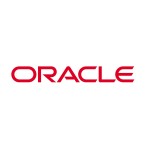 Oracle Corporation started life as Software Development Laboratories in June of 1977 by Larry Ellison, Bob Miner and Ed Oates. Renamed to Relational Software Inc. two years later, the company sold the first version of the Oracle database to Wright Patterson Air Force Base. Oracle 2 was designed to run on the PDP-11. In March of 1983, the product was completely rewritten in C language and RSI was renamed to Oracle to closely identify with their flagship software. In 1984 Oracle was ported to the PC platform. The DOS version ran with only 640k of memory. Released in 1985, Oracle 5 became one of the first RDBMSs to operate in client/server mode.
Oracle Corporation started life as Software Development Laboratories in June of 1977 by Larry Ellison, Bob Miner and Ed Oates. Renamed to Relational Software Inc. two years later, the company sold the first version of the Oracle database to Wright Patterson Air Force Base. Oracle 2 was designed to run on the PDP-11. In March of 1983, the product was completely rewritten in C language and RSI was renamed to Oracle to closely identify with their flagship software. In 1984 Oracle was ported to the PC platform. The DOS version ran with only 640k of memory. Released in 1985, Oracle 5 became one of the first RDBMSs to operate in client/server mode.
Oracle has become a giant of relational database management systems and resource planning software and has grown into a multibillion dollar company. It’s products are widely used to this day especially in the enterprise computing world, and it currently boasts over 50k employees worldwide.





